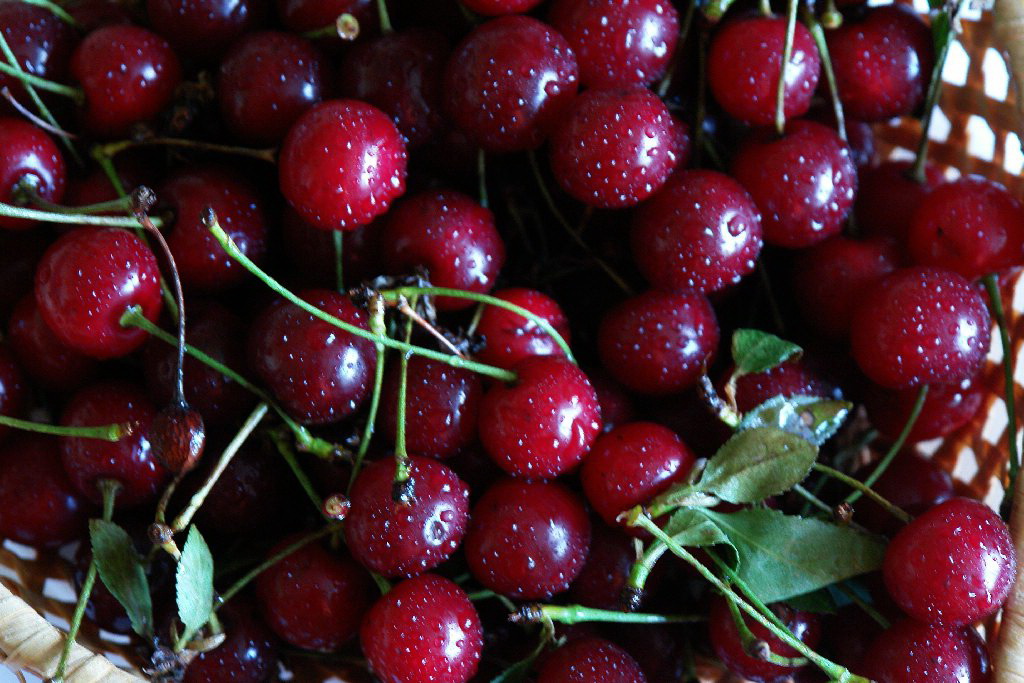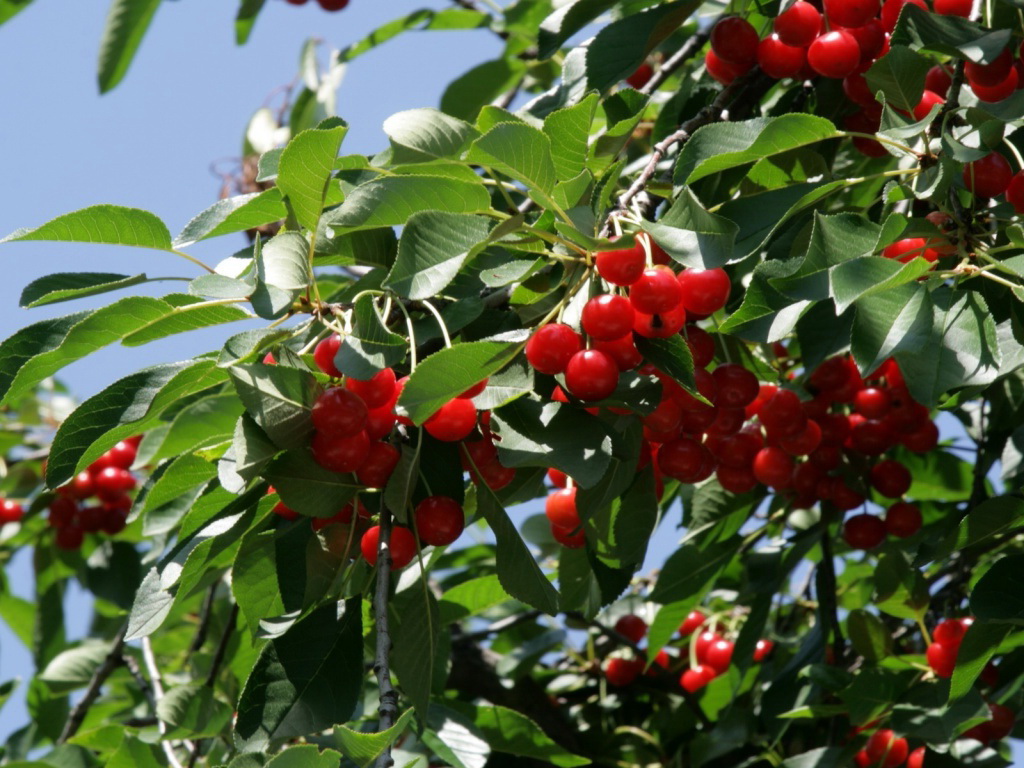Unpretentious Brusnitsyn cherry - features of cultivation
Cherry is a unique garden plant. Most popular among fruits, disease resistant, high yield. Gardeners are very fond of him for tasty, healthy fruits, unpretentious care. Many varieties have been developed that adapt to almost any climatic conditions. There are two types of cherries: tree-like, bushy. The variety described below is related to the latter. This is Brusnitsyn cherry.
Content
Description of the variety
Let us consider in more detail the characteristics of the Brusnitsyna variety. Sprawling, beautiful bush can grow up to two meters high. Shoots reach a length of 30-35 centimeters. Most of the fruits are located on the branches. Because of their rapid growth, you can shape the crown as you like.
The burgundy sweet and sour fruit weighs about 6 grams. Inside, they are dark red, very juicy. The branches are literally covered with berries (clearly visible in the photo).
Fruiting begins 3-4 years after planting. The harvest is rich. One plant produces up to 20 kilograms of fruit per season.
Cherry Brusnitsyna is the pride of national selection. Extremely frost-resistant, tolerates harsh climates. She is especially loved in the Urals. It has high immunity, so it rarely gets sick. With proper care, it does not cause much trouble.
One of the main values of this fruit bush is self-fertility. That is, such a cherry will do without additional pollinators. The pollen in the flower can persist and germinate for up to two weeks. Sometimes, even 20 days. It forms about 40% of the berries from the total number of one plant. Other benefits include early ripening.
Growing features
Saplings
Brusnitsyna's cherry is grown in almost the same way as other varieties. The best seedlings are one or two years old. Before planting, carefully examine the roots. Remove diseased parts, if any. Sometimes they use a clay talker, so that the material takes root better.
Landing site
The best place is the southern or southwestern part of the garden. It is best to plant cherries on a small hill or slightly hilly surface. This will exclude a high rise of groundwater. Stagnant moisture is bad for the plant. And a long stay of the root system in water is generally unacceptable. So it can die. Bushes are planted near wooden buildings, especially in harsh climates. So they will be warmer in winter.
The soil
The best soil for cherry trees is sandy soil. It should be loose. If the soil is heavy, with a lot of clay, add several buckets of sand. The soil for planting must be fertilized. Humus, wood ash about two kilograms, chemical preparations of potassium and phosphorus are introduced. This is all carefully dug up.
Landing
For Brusnitsyn cherry, as for a bush type, the distance between seedlings should be at least three meters. The pit is large enough for the roots to fit easily. Approximate dimensions: half a meter deep, the same diameter.
Before planting, the roots of the tree must be kept in water for about 10 hours. The bottom of the planting pit is covered with a small layer of fertilized soil. A peg is hammered into the center. A seedling is placed next to it. Smooth out the roots. Fall asleep with soil, gradually tamping. Make a hole for watering, stepping back 30 centimeters from the trunk. Sprinkle with 1-2 buckets of water. The near-stem furrow is covered with a thin layer of mulch.
Care
We will give a description of care for Brusnitsyn cherries in general terms.Because it is basically the same for all species.
On the cherry plot, you need to get rid of all conifers, since they are carriers of diseases. Timely remove overgrown shoots that take nutrients from the plant. And also the diseased parts.
In summer, shallowly loosen the soil around the trunk 2-3 times so that there is sufficient air circulation. In dry weather, the wells are watered abundantly. The first time is after flowering. The second is as soon as the fruits begin to pour. The third is when the foliage falls (October, November).
Top dressing
Organic fertilizers are applied at planting, and then every 2-3 years in the fall. Then - phosphorus (200 grams), potassium (70 grams) minerals. Nitrogen - in early spring (50 grams of urea). Dry ones are used for watering. Otherwise, you need to breed. During the growing season, cherries are fed twice with complex fertilizer. Along with chemical preparations, cow dung with ash diluted in water is effective. In the photo you can admire the beauty and fertility of Brusnitsyn cherry.

Video "Agricultural technology of stone fruit crops"
You can learn more about the agricultural technology of stone fruit crops using the example of cherries from the video.

